Story by Pete Vack
We’ll call them Fantuzzis, for more than anyone else Medardo Fantuzzi inspired the coachwork of the A6GCS. Perhaps Ermanno Cozza, who was actually an employee at Maserati at the time, gives us the most accurate summation of who was responsible for the design. In his autobiography, Maserati at Heart, (Nada 2018) Cozza describes the phases of construction which involved drivers, mechanics, and designers. He wrote, “The most striking example was without doubt was the launch of the A6GCS/53, which debuted in that year’s Mille Miglia, winning its class with Emilio Giletti. The engine was a version of the A6GCM unit revised by Gioachino Columbo, while the bodywork built by Fantuzzi, was also fruit of an idea by Colombo.” (p43). (Not all of the A6GCS cars were constructed by Fantuzzi’s shop: Thirty three of the bodies were constructed at nearby Fiandri and Malagoli.)
The new Maserati was beautiful, purposeful, as curvy as Gina Lollabrigida and influenced several of our family members. We came up with five Fantuzzi A6GCS Maseratis connected to the Editor’s family. Rest assured that no one actually owned any examples of the real thing. But here’s our story anyway.
Chassis 2079 and Uncle Gerry
Uncle Gerry got the ball rolling when he attended the Paris Salon in 1954. He photographed a number of great cars there, including the Pinin Farina Ferrari purchased at the show by director Roberto Rossellini, a Pegaso, the first Alfa Giulietta Sprint, and a Maserati A6GCS. It was not until the publication of Bäumer’s latest book (read review) that we were able to confirm that the car Uncle Gerry saw at the Paris show was chassis 2079, “completed on September 28th, 1954 with a Fiandri body with a small windshield and displayed at the Salon de l’Automobile de Paris on October 7th, 1954, on the Maserati stand of the French Importer, Thépenier.” Shipped to the U.S. after the show, it then returned to France only to be returned to the U.S. purchased by Harry Marks. After an unimpressive U.S. race record, it went to Rudy Pas and to France once again where it remains today. But Uncle Gerry’s clear Kodachrome slide showed the family what was possible in Paris.
Chassis 2039 and cousin Bob
We all remember those TOPP baseball cards with a series of cars instead of ball players, right? Called the “World of Wheels,” the cards were issued between 1953 and 1955 with chewing gum. Sometime in the fifties cousin Bob Hanninen, who was also heavily influenced by the slides Uncle Gerry showed when he returned from Paris, began collecting the cards. Most of the cards featured American cars, but a surprising number depicted foreign sports cars, the OSCA Maserati being number 15 in the deck. Used to dealing with Dodgers and Yankees, the card’s information was not entirely correct. The card portrayed the one off 2039, which, according to Richard Crump, was designed by Guglielmo Carraroli and was built in the Fantuzzi workshop, itself a part of the Maserati factory. Eventually it came into the hands of Karl Ludvigsen, who needs no introduction here. And the cards? There were 180 cards in the series, and Bob managed to collect 94 of them, not a bad feat in itself.
The one with no Chassis number
Next in line was a Dinky Toy, a French Dinky Toy, Meccano, number 22A, circa 1957. I bought it new, but don’t know when, perhaps 1960 or so. The box is gone and the helmet has some paint missing, but otherwise in mint condition. Worth perhaps $100 on the market today. There is no chassis number associated with the model but it most assuredly it is an A6GCS series II.
From Wiki, we learn that “Dinky Toys was the brand name for a range of die-cast zamak zinc alloy scale model vehicles produced by British toy company Meccano Ltd. They were made in England from 1934 to 1979, at a factory in Binns Road in Liverpool. Dinky Toys were among the most popular diecast vehicles ever made In 1951, French Meccano has been the first post-war European manufacturer to introduce 1:43 scale. Initially, the scales of French Dinky Toys were similar to those of English Dinkys.”
What is remarkable here is that the model was never played with or altered in any way; one of the few that escaped the master’s desire to make things better.
Chassis 2040 Brother Greg carries on
Brother Greg inherited my old Strombecker racetrack and still has it, or at least some of it. One day a few years ago, he called and asked me if I had any photos of an A6GCS number 525 at the 1953 Mille Miglia. He wanted to detail his new Carrera model with the driver and co driver’s correct helmet colors. Right. Somehow he found a photo of the car as it appeared in the Mille Miglia. In fact it was the very first of the Series II cars, and was driven in the event by Emilo Giletti and his co-driver was none other than chief mechanic Guerino Bertocchi; the car didn’t dare break down! Nor did it as it won the 2 liter class and sixth overall. Impressive debut indeed.
Greg had chosen the right car to detail. But when, years later, I happened upon another Carrera A6GCS slot car and bought it. I pulled it out of the box for this article. For the first time I really looked at it.
Chassis 2069 The Editor’s surprise
My copy of the same product said, right there on the stand, that this was to represent a car entered in the 1954 Mille Miglia. But the number was 525, the same as on Brother Greg’s model. Something was amiss. Could number 525 A6GCS have been the number for two A6GCS Maseratis in the 1953 and 1954 Mille Miglia? Odds seemed unlikely. But could Walter Bäumer’s new book help?
I did a page search to no avail. The only 525 pictured in the book was on chassis 2040. Fortunately, the index lists all the races each car participated in by the event. So, there was the 1954 Mille Miglia.
But there were ten A6GCS Maseratis listed as entered that year, a real achievement for Maserati. Now all we had to do was to look through the histories of each one of the cars entered to see if there was a number 525, as the slot car manufacturer claimed.
Taking the chassis numbers in order, we carefully read each one of the histories to see what their number was. Chassis number 2069 was the last on the list. And there was no photo of the car at the 1954 Mille Miglia. But the text was clear; number 525 was entered by Sergio Ferraguti, his co-pilot was Fausto Gualdi, and it did not finish.
And so, that’s our little story. Thank you for reading.
But wait, there’s more. As we mentioned, co author of the Maserati A6GCS, Jean François Blachette creates 1/43 Maserati models. His website is http://jfbmodels.com/UK/fiche-produit.php?PHPSESSID=d6f9f4645a9e18a0097583ab12330109
Here is a photo of the Blachette A6GCS:
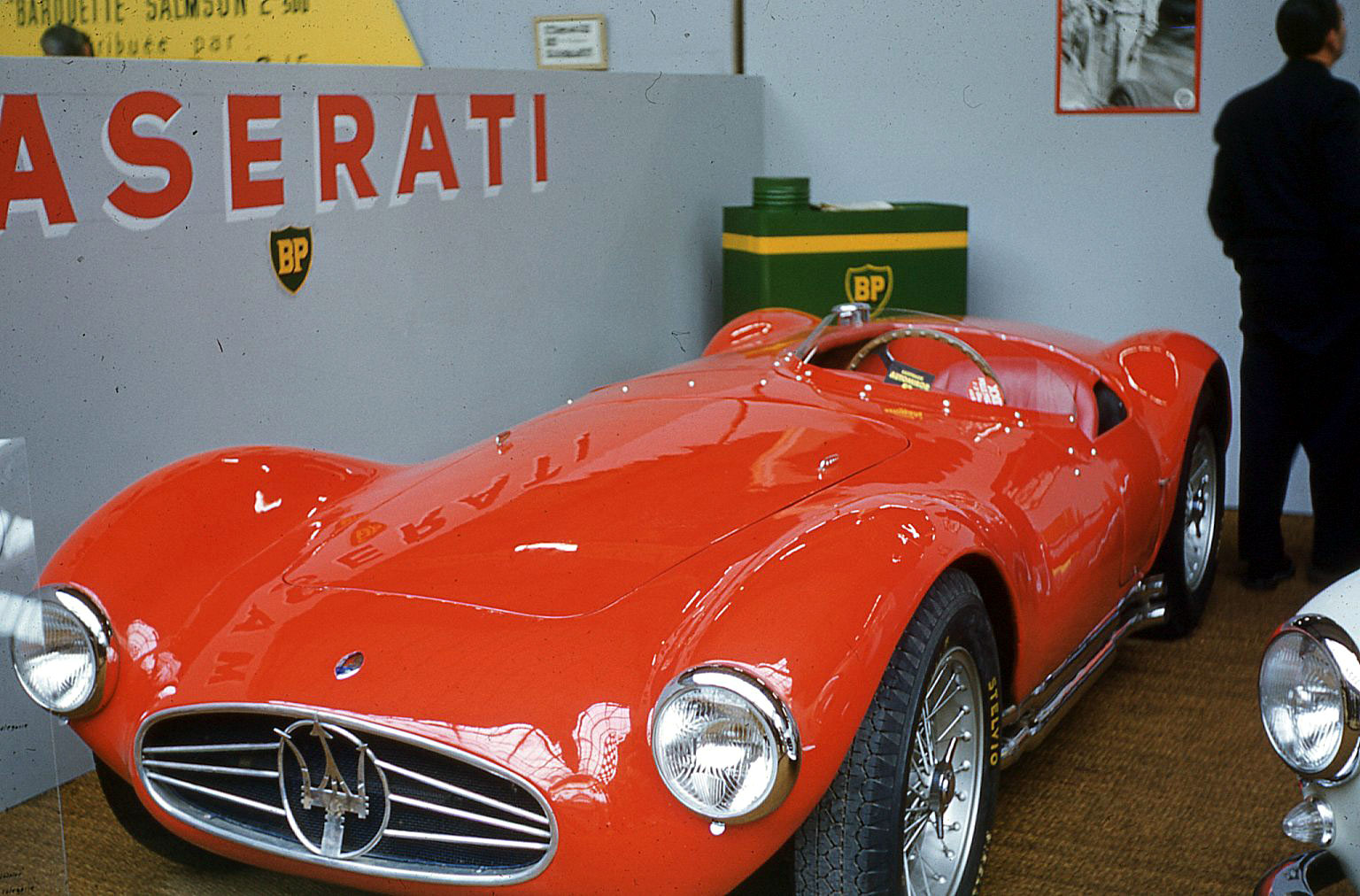
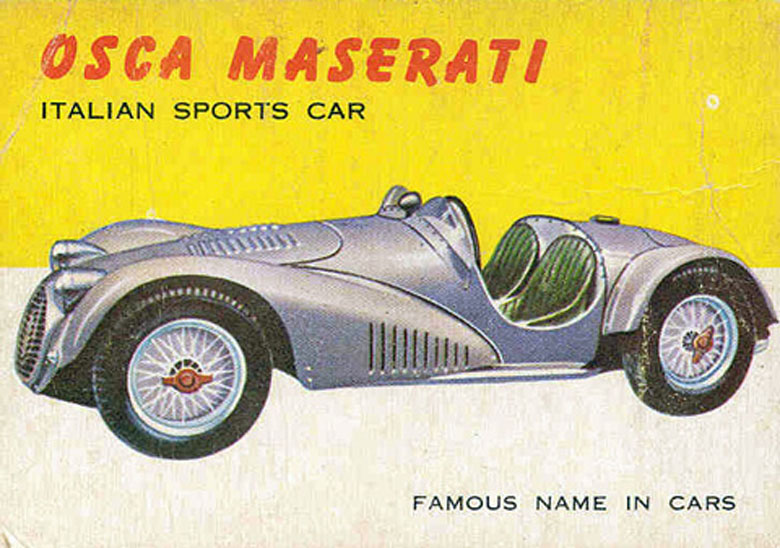
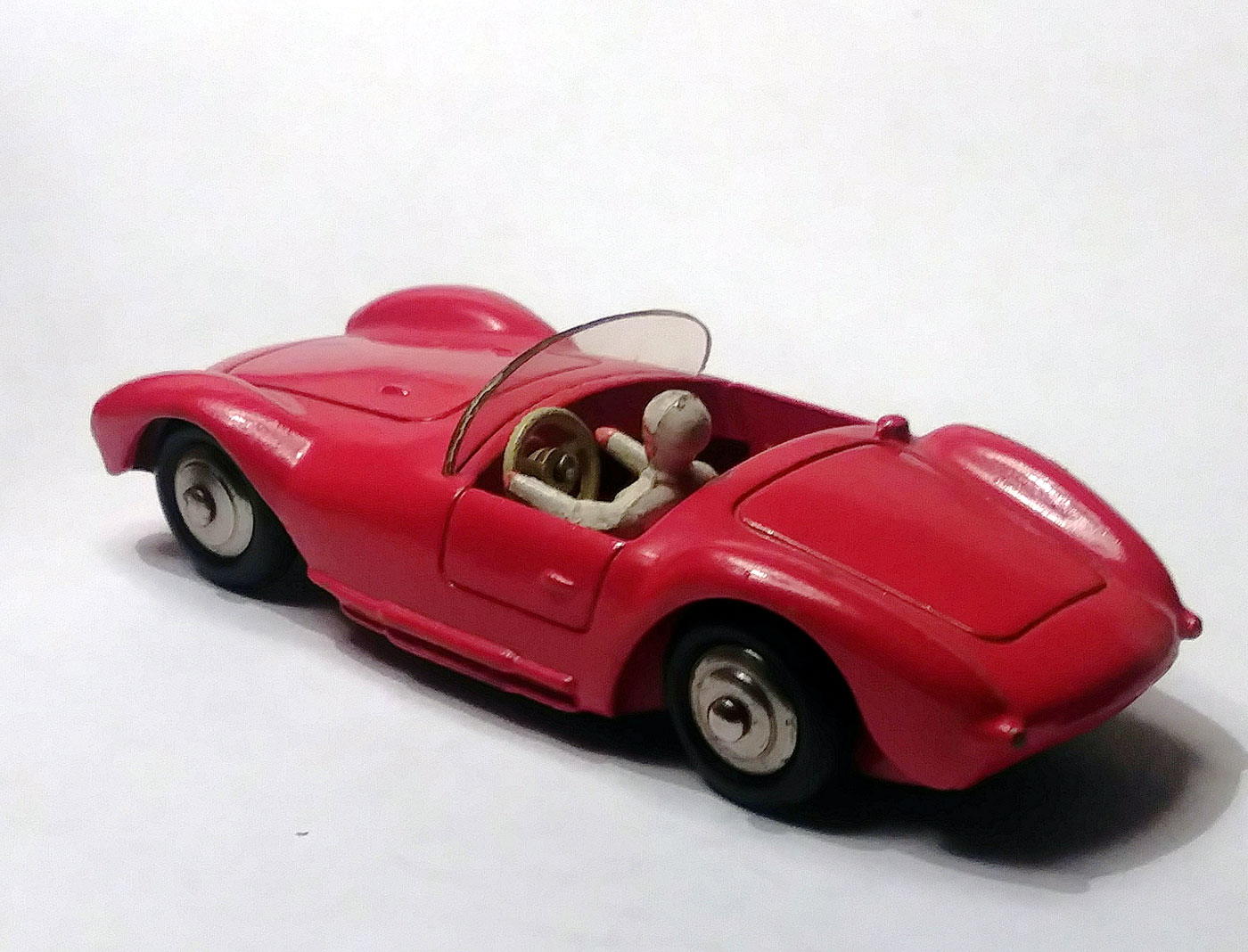
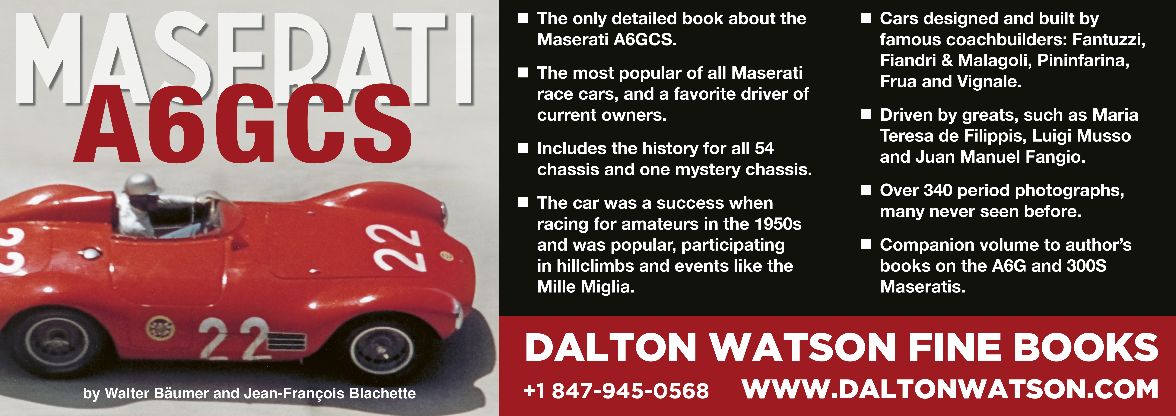
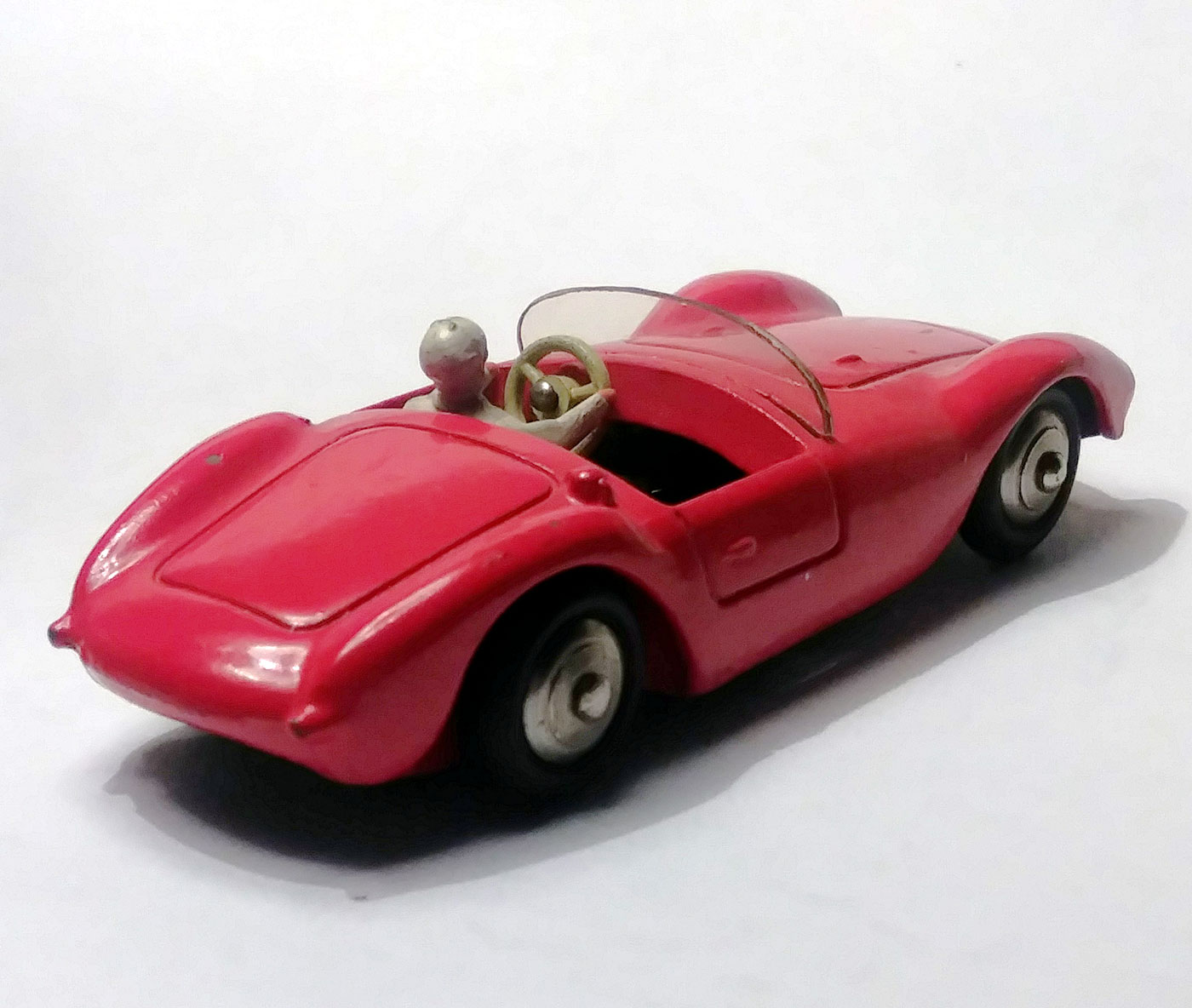
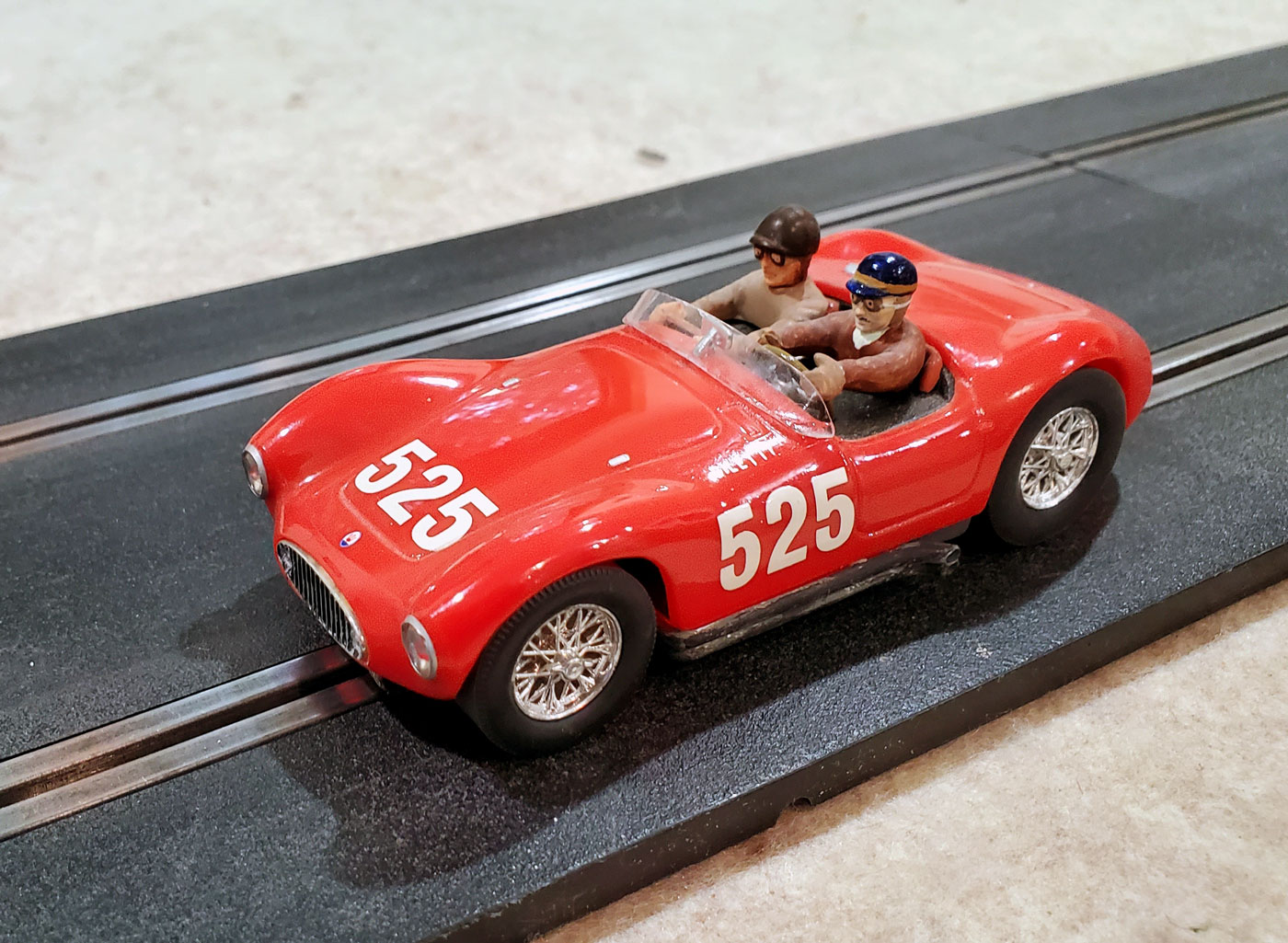
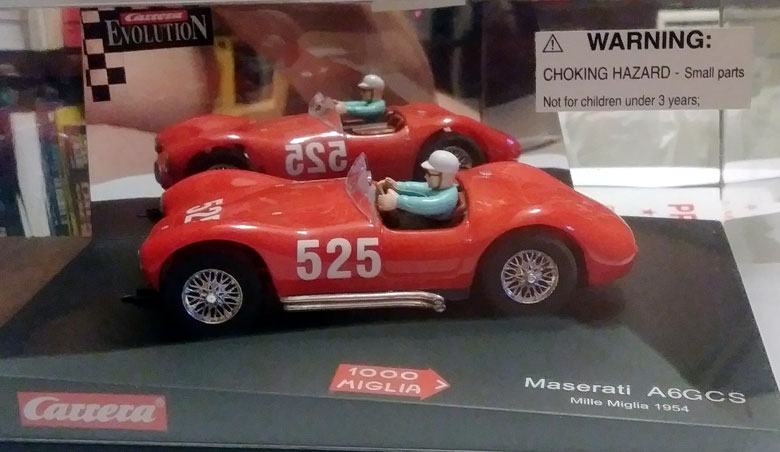

Pete-
Enjoyed the interesting personal story. I’m the first victim of this affliction in my family as my dad, bless his heart, didn’t know which end of the car the engine was in and thought my interest in motor racing was silly.
Regards-Jeff
Nice to see 2039 even as an off-color card. It’s not quite unique as several other Monofaro chassis were given this style of bodywork when rules came in outlawing cycle fenders/wings. Lou Brero comes to mind as an active racer of one such.
It could be that ‘mine’ was unique in having the full Formula 2 twin-cam engine however.